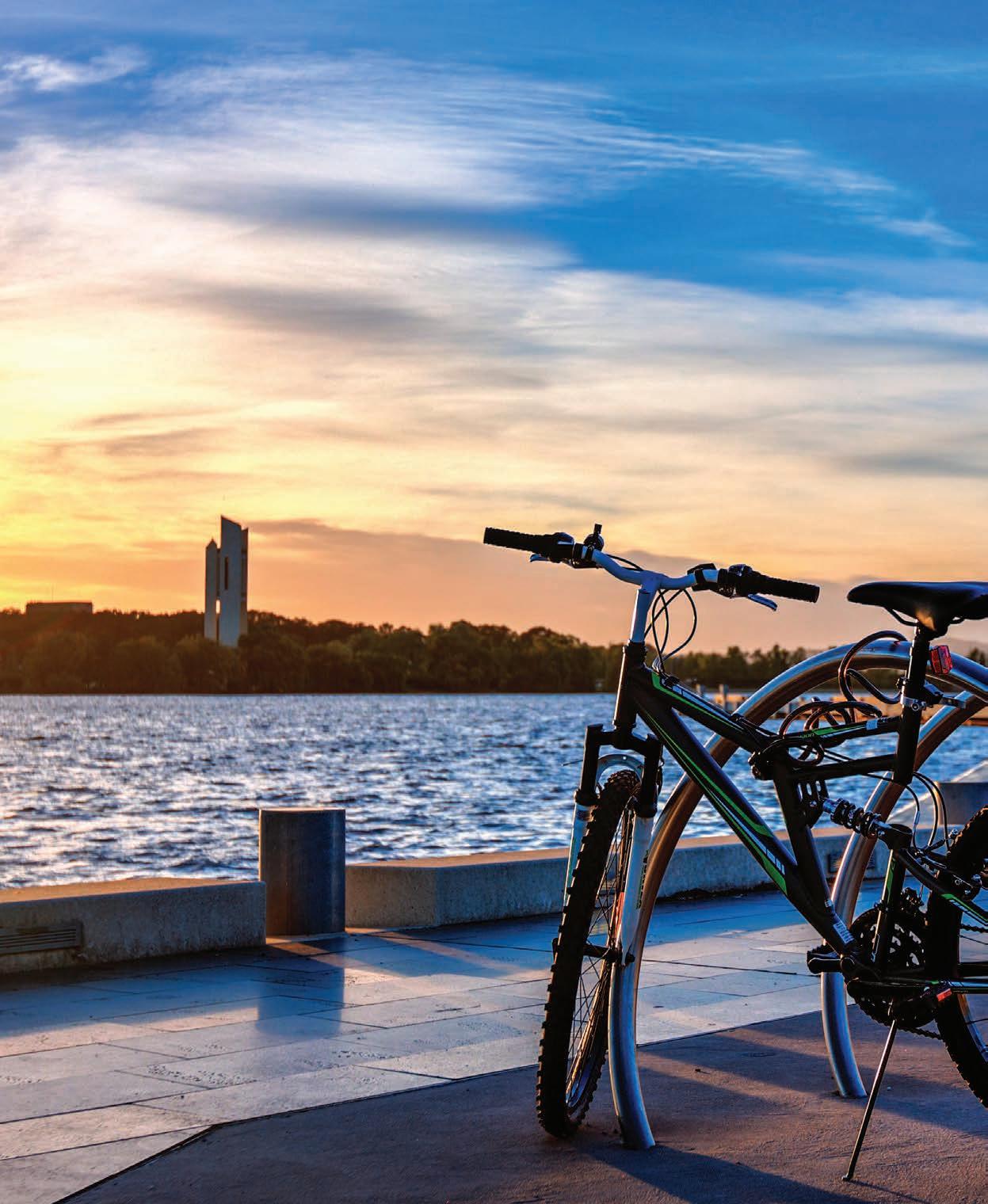
9 minute read
Capital of colour
WORDs: Michelle Hespe
One of the first things that Canberra novices notice is that the city is so organised, chaos-free and clean. And if you head to our capital in Spring, the city bursts into colour, with Floriade taking centre stage.
Advertisement
Canberra is like a model with four distinct colour palettes to express her different moods according to the season: fiery reds and oranges teamed with brilliant blues for autumn; restrained greys and browns with silver and black trims for winter; ribbons of popping bright hues and touches of pretty pastels for spring. And in summer, the heat makes her shimmer like an oasis in the desert.
There’s a reason for these extreme seasonal showcases. Canberra was a meticulously designed city, where the gardens, trees and waterways were as thoughtfully considered as the roads, buildings, and infrastructure.
Canberra was built to appease the politicians who vigorously debated where our capital city should be after Australia’s federation in 1901. Some of the most outspoken were from Victoria and NSW, and they argued that their own cities – Sydney and Melbourne – should be our nation’s capital.
Location scouting for the ideal site of the new reigning city ensued, and places such as Dalgety, Bathurst, Orange, Albury and Bombala were considered. In 1909, after eight years of recces and debate, Canberra was chosen. It was legislated in 1911 and in 1913 it was officially named as the capital of Australia. Interestingly, as Canberra does not have a seaport, in 1915 it was decided that Jervis Bay would become part of the Australian Capital Territory, even though it’s 230 kilometres away.
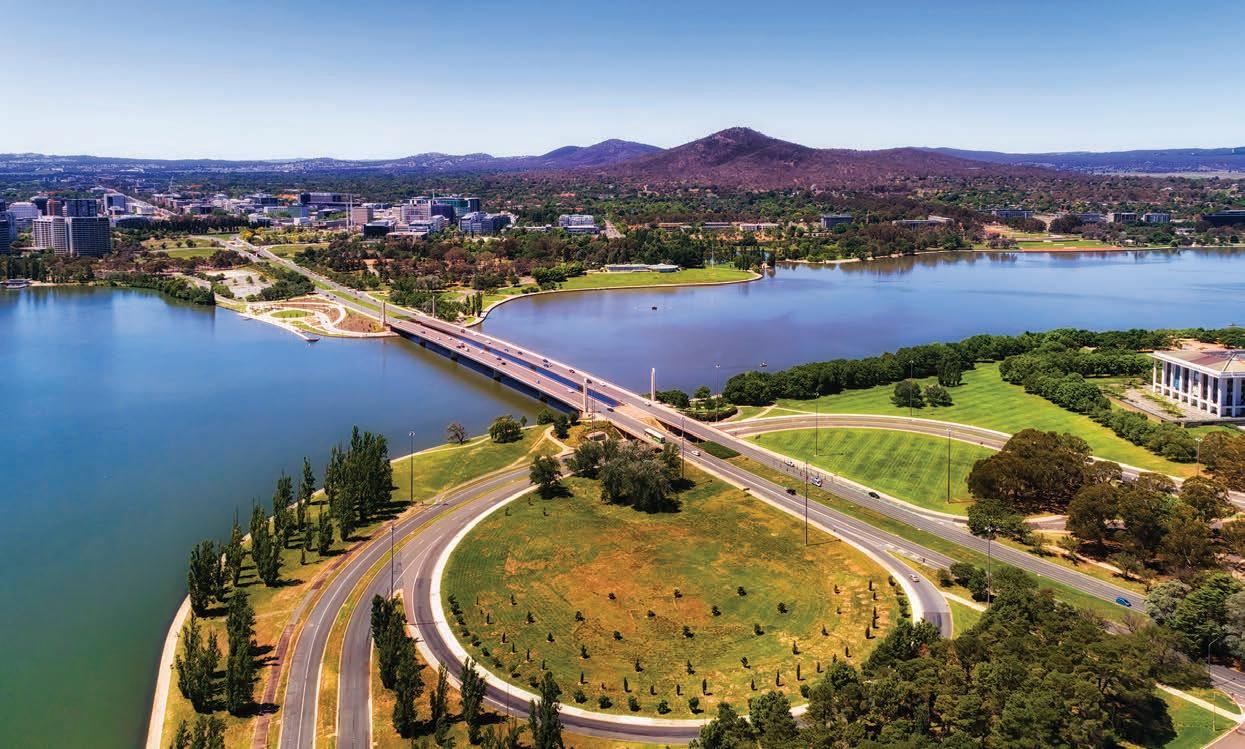
Back to our model called Canberra. She avoided the ungainly, haphazard growth spurts – that led to the misplaced, confusing (for drivers) and sometimes downright unattractive developments and urban sprawls in cities such as Sydney and Melbourne – by having an international design competition launched in her honour. This ensured that she had the right look and feel from the start.
The competition attracted 137 entries, and a savvy husband and wife architectural team from Chicago (home to some of the best modern city architecture in America) won. Walter Burley Griffin and his wife Marion Mahony Griffin set the vision for the city of today, with Lake Burley Griffin at the heart and a parliamentary triangle able to be seen from vantage points including Mount Ainslie and, rather cleverly, a hot-air balloon.
Marion, a graphic designer and the first accredited female architect in Illinois, was the one who encouraged her husband to enter the competition. It was her beautiful illustrations that no doubt swayed the judges, but her name was nowhere to be seen on the documents and of course the lake was named after Walter. However, Marion didn’t just disappear into history. In 2013, the ACT Government named the view from the top of Mount Ainslie after her, and a bust was made in her honour. It sits proudly overlooking the city that she helped to shape.
The couple’s designs and ideas are the reason Canberra is what it is today – a model city where the man-made and natural landscapes balance one another to create a ‘bush capital’ that struts her stuff in all seasons.

CRUISE AROUND LAKE BURLEY GRIFFIN
Some might argue that Canberra’s centrepiece is the parliamentary triangle, but others would give that accolade to Lake Burley Griffin, as it really is the heart of Canberra. Around the lake, joining up the many inner-city suburbs and beyond into the outlying vineyards and fields, are winding, flat paths made for walking, cycling and, in recent years, scootering.
Whatever the season, the lake is a peaceful place where you can stop at one of many cafes for a cuppa, explore parklands and cruise along the foreshore admiring the plethora of new developments. The apartment blocks crowded around the squeakyclean Kingston create a modern, architecturally designed village bursting at the seams with bars, restaurants and shops, and it has its own marina where you head out on the lake on a boat or kayak.
There are lots of places around the lake where you can hire bikes and scooters, but WalkSmart is ideally located in Campbell, a few minutes’ scooter from a gateway to the lake’s pathways, and also a stone’s throw from the enormous sculpture walk that leads to the Australian War Memorial.
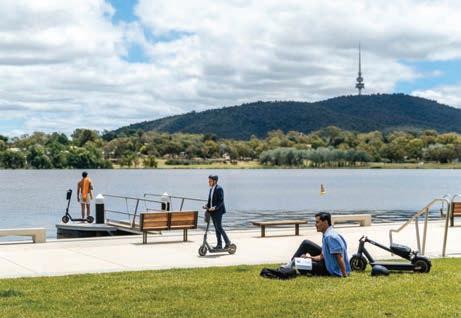
WalkSmart’s mission is to make it convenient, safe and affordable for people to get around, as the founders believe too many of us use transport options that are expensive, harmful for the environment, inconvenient and inflexible. The electric scooters can go up to 25km an hour and are an ideal way to explore Canberra, because the pathways also connect all of the must-do attractions such as the National Gallery of Australia, the National Portrait Gallery, and the National Museum of Australia.
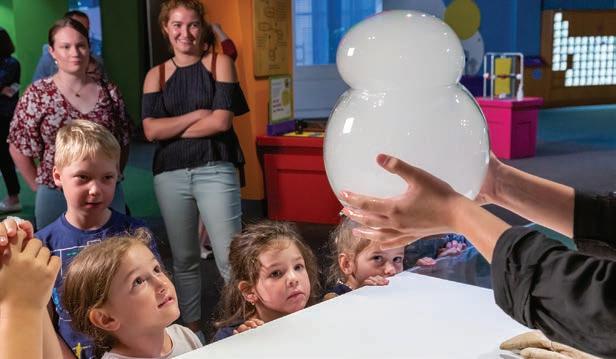
BLOW YOUR MIND AT QUESTACON
It’s a family favourite – but even if you don’t have kids, you should fit Questacon into your plans. It’s jam-packed with things to do and see – many of which will challenge your brain and have you seeing things in a different way. Interestingly, the foundations were laid for what it is today in 1980, when Questacon started out as a project of The Australian National University (ANU) in an unused space at Ainslie Public School. It opened with 15 exhibits and was staffed entirely by volunteers.
In the past 40 years it’s become so much more, and is a popular centre with a goal of promoting greater understanding and awareness of science and technology in a fun and interactive way.
You can watch lightning strike and learn about what causes this phenomenon; see what happens to dry ice when it hits water (it’s utterly mesmerising!); stand on a cleverly crafted floor and feel the power of an earthquake; play air hockey with a robot (it sure is hard to win) and watch the engaging staff present interactive science experiments.

EXPERIENCE THE EAST & INDULGE ITALIAN-STYLE
If you’re after a weekend of sheer indulgence – great wines, beers, cocktails, fantastic pasta, risotto, pizza and dessert – with a happening place to socialise and hang out in style, the East Hotel in downtown Kingston has it all in spades. Add a cosy, stylish bookstore café called Muse into the mix and suites oozing with a fun sense of style, and you have your time in Canberra sorted.
As soon as you step into East Hotel, it’s obvious that owners Dion and Dan Bisa set out with a mission to create a tantalising destination rather than simply a hotel to lay your head. The rooms are quirky, colourful, light-filled, spacious and comfortable.

The lobby, with its soaring ceiling and creative glass and flower sculptures, has the feel of an inner-city dining alley merged with an upmarket art gallery and a European ski lodge complete with an open fireplace.
The rich autumnal colour palette interspersed with creamy flowers in bloom and an ice blue sky on a floral patchwork carpet captures Canberra’s vibrant seasons. Luxurious armchairs in dark brown leather and olive-green fabrics, teamed with tables of Italian green marble and lounges in teal suede, come together to create a lounging space made for sipping Martinis in a silk gown and slippers.

Speaking of Martinis, once you’ve settled in, pop on over to Joe’s Bar, where you can take your pick from classic cocktails and a well curated wine and craft beer list. Mix and match with the delicious snacks available – such as arancini al pomodoro (tomato and mozzarella) or Ricotta and focaccia – so good you would be forgiven for eating an entire plate yourself.
For the main affair, head on over to Agostinis restaurant, where you can make life easy and select a feast for a set price, such as the $70 ‘Festa’ of antipasto, two pizzas, one pasta, one main, two sides and a dessert board. Or you can be a bit choosey and select a range of delectable dishes from Chef Francesco’s mouthwatering menu packed with Italian classics, pizzas and pastas, steaks and other hearty dishes.
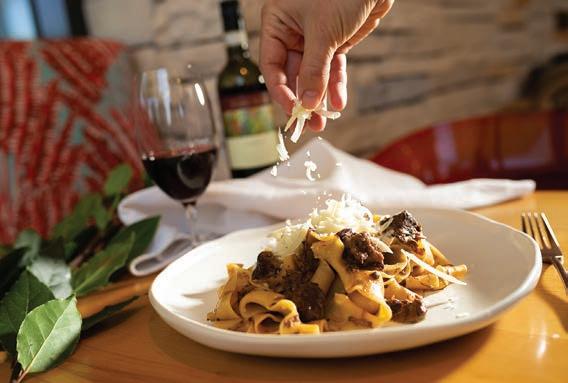
The Pappardelle al Ragu Toscano is nothing short of sensational, and for lovers of seafood, the seafood linguine ai Frutti di mare (meaning fruit of the sea) is pure heaven.
Before you know it, you’ll feel like you’re dining in Italy. And as anyone who has been to an Italian home or eatery knows, you won’t be able to escape without trying at least one dessert. You must eat-uh! Try the Tiramisu paired with an espresso Martini or a lovely Pinot Noir.
A flower festival like no other
How does this sound for a great day out? Wander among a sea of beautiful flowers bursting with colour in the spring sunshine, immerse yourself in music and entertainment, enjoy tasty treats, grab yourself some great finds at the market stalls, and join in fascinating talks and workshops for young and old.
Sound good? It’s all on offer at Floriade, Australia’s biggest celebration of spring, which returns to its traditional home of Commonwealth Park in Canberra from Saturday 11 September until Sunday 10 October.
Over a million blooms will create a stunning display and backdrop to the month-long festival. This year’s theme for the event is The Future of Flowers, which will be reflected in the flowerbed designs and a range of workshops and talks, sparking conversations around climate change and sustainability.
Celebrating the arrival of spring, the jam-packed program will see Commonwealth Park come alive again with music, cultural celebrations, food and wine, horticulture workshops, artistic displays, markets, entertainment, and recreational activities.

Paint some gnomes with the kids then take them on a gnome hunt through the park before joining in the art and craft sessions for our Floriade Sprouts.
Dig deeper into the wonder of nature by signing up for one of our guided tours, talks or workshops covering topics such as Gardens of the Future; food sustainability and up-cycled art and fashion, and debating ethics and sustainability in the flower value chain in The Scented Truth.
And when the sun goes down, enjoy live entertainment and comedy as you discover what Floriade’s dark side has to offer. Floriade NightFest is returning for four nights from Thursday 30 September to Sunday 3 October and tickets are available through the website.
Beyond the gates of Floriade, Canberra is brimming with must-see-and-do experiences this spring. With a stellar food and wine scene, a multitude of museums and galleries and endless natural attractions just waiting to be explored.
And as you explore Canberra look out for more bursts of colour planted by members of our Floriade Community throughout the city and suburbs. Over 90 schools, community groups and organisations have planted over 300,000 bulbs and annuals to help spread the colour and joy of Floriade so look out for it on your travels around town.
We’re looking forward to seeing you at Floriade, Australia’s biggest celebration of spring!
While free to attend, due to COVID-19 restrictions, attendees may need to book pre-registered tickets. Visit floriadeaustralia.com for more information






